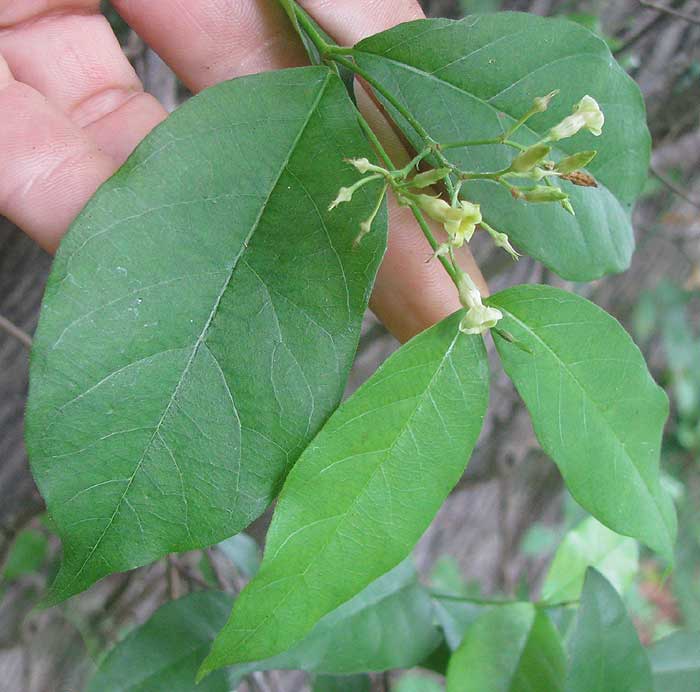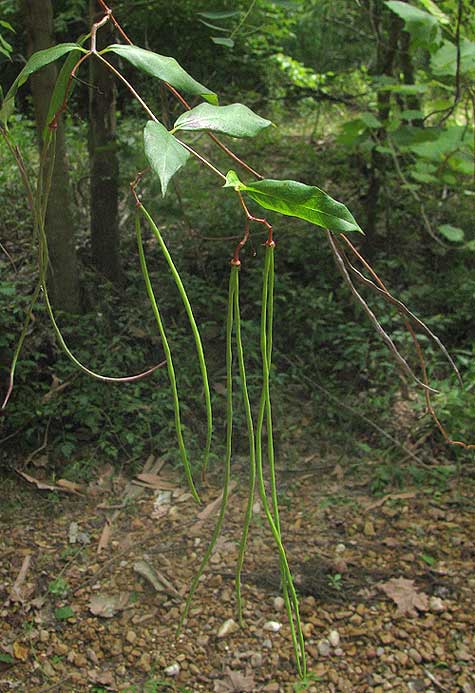Excerpts from Jim Conrad's
Naturalist Newsletter

from the the August 5, 2012 Newsletter issued from the woods of the Loess Hill Region a few miles east of Natchez, Mississippi, USA
CLIMBING DOGBANE
A fairly common but easily overlooked vine twining around stems at woods edges, along hedgerows, around brush piles and the like is shown below:

You can see that vegetatively it could be confused with Japanese Honeysuckle, but of course honeysuckle doesn't produce those long, slender fruits dangling from the vine. The fruits are technically follicles, which means that they are dry instead of fleshy, upon maturity split apart to release seeds only on one side, and that it is a product of a single pistil. Notice that the follicles arise in pairs from woody stems. These stems are peduncles, each of which formerly bore a single flower. Therefore, two follicles have been produced by each single flower.
When you see such an arrangement you should immediately think of the huge and important but mostly tropical Dogbane Family, the Apocynaceae. In recent years the Milkweed Family, better known to Northerners, has been lumped into the Dogbane Family. When the slender follicles in the picture split open, white-parachuted seeds will emerge looking very much like those white-parachuted seeds milkweeds launch into late summer and fall breezes. In fact, one way to distinguish this vine is by the milky sap that issues from its injured parts, which is typical of members of the Dogbane and former Milkweed Families.
It happens that back in mid May I photographed this species' small, inconspicuous, greenish-yellow flowers, and that's them at the top of the page.
This vine is Climbing Dogbane, TRACHELOSPERMUM DIFFORME. It's mostly a southeastern US species, reaching as far north as Delaware and Illinois and south into northern Mexico.